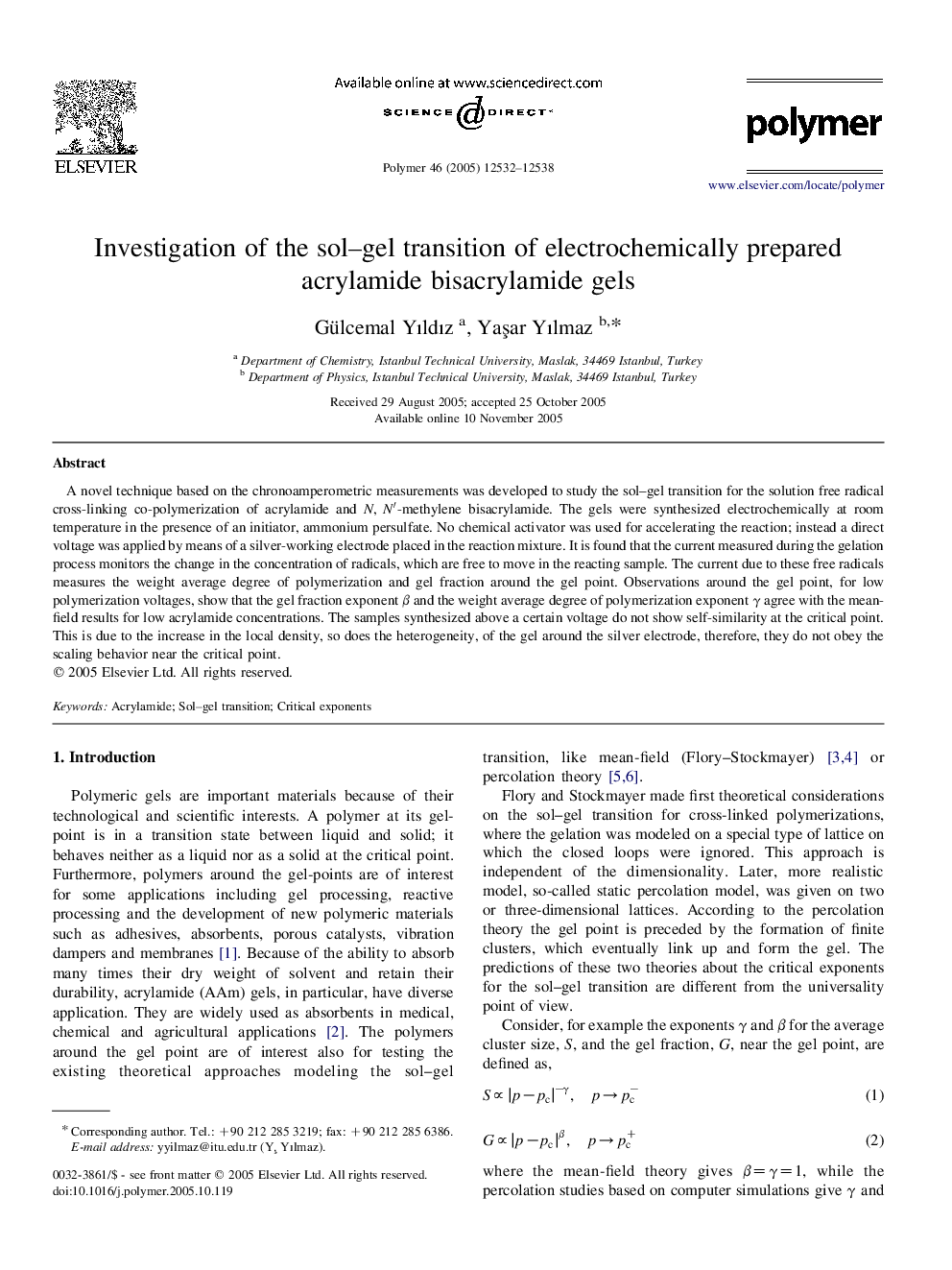| Article ID | Journal | Published Year | Pages | File Type |
|---|---|---|---|---|
| 5189654 | Polymer | 2005 | 7 Pages |
Abstract
A novel technique based on the chronoamperometric measurements was developed to study the sol-gel transition for the solution free radical cross-linking co-polymerization of acrylamide and N, Nâ²-methylene bisacrylamide. The gels were synthesized electrochemically at room temperature in the presence of an initiator, ammonium persulfate. No chemical activator was used for accelerating the reaction; instead a direct voltage was applied by means of a silver-working electrode placed in the reaction mixture. It is found that the current measured during the gelation process monitors the change in the concentration of radicals, which are free to move in the reacting sample. The current due to these free radicals measures the weight average degree of polymerization and gel fraction around the gel point. Observations around the gel point, for low polymerization voltages, show that the gel fraction exponent β and the weight average degree of polymerization exponent γ agree with the mean-field results for low acrylamide concentrations. The samples synthesized above a certain voltage do not show self-similarity at the critical point. This is due to the increase in the local density, so does the heterogeneity, of the gel around the silver electrode, therefore, they do not obey the scaling behavior near the critical point.
Related Topics
Physical Sciences and Engineering
Chemistry
Organic Chemistry
Authors
Gülcemal Yıldız, YaÅar Yılmaz,
